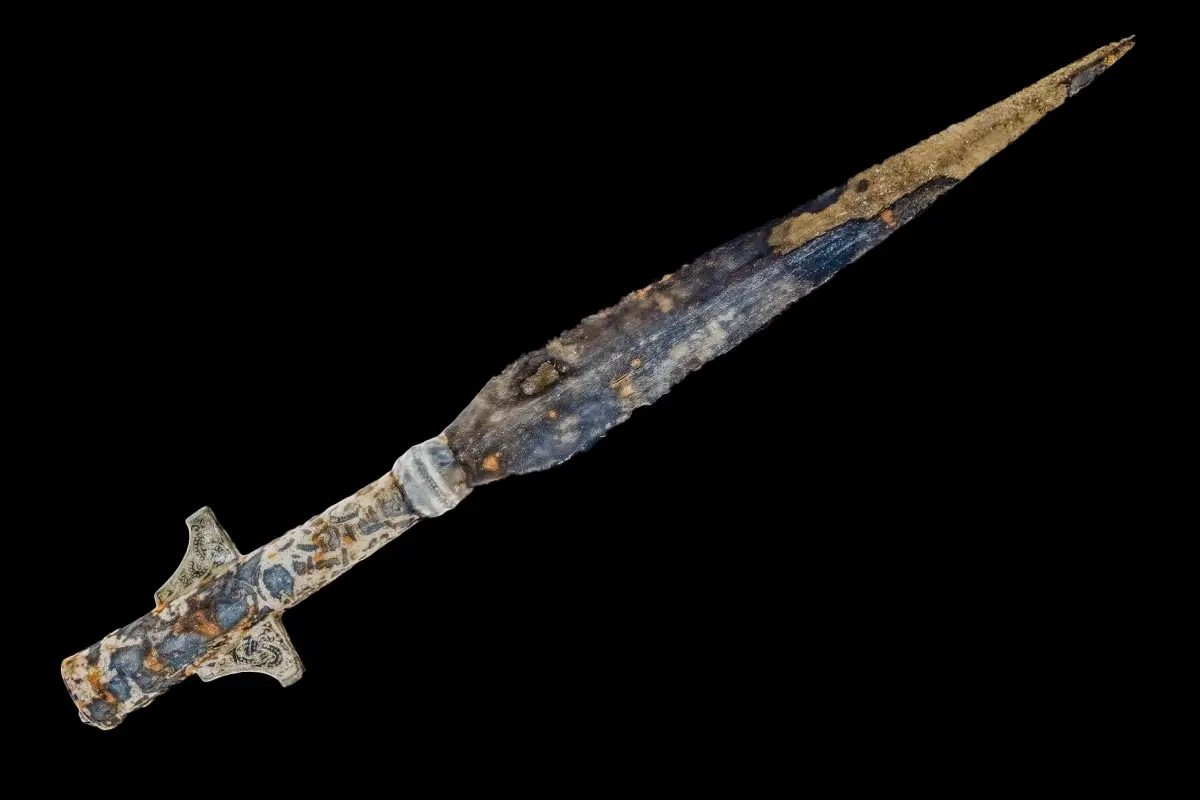Underwater archaeologists from Nicolaus Copernicus University have uncovered four remarkably well-preserved medieval spears in the waters around Ostrów Lednicki, an island in the southern section of Lake Lednica in Poland.
Ostrów Lednicki is one of the most significant archaeological and historical sites in Poland, often described as a cradle of the early Piast state. The island served as a fortified stronghold (gród) under the rule of Mieszko I and his son Bolesław I the Brave, the first kings of Poland.
Researchers from the university’s Centre for Underwater Archaeology have long explored the lake, which includes more than 200 weapons previously being discovered. In the latest exploration, four medieval spears were discovered dating to the 10th and 11th centuries AD.
The smallest of the spearheads is rhomboidal in shape with part of its ash shaft, measuring about 2.1 metres, surviving intact. According to project director Dr. Andrzej Pydyn, only two other Lednica spears retain similar shaft fragments.
“The second spearhead, slender and delicate, resembles a willow leaf – a shape common throughout early medieval Europe. Similar examples found within the Lednica complex may indicate local production and the region’s strong craftsmanship traditions,” said a representative of the Nicolaus Copernicus University.
The third spearhead, the longest of the group, was forged using a sophisticated welding technique that combined soft and hard steels to produce superior battlefield durability – evidence of advanced metallurgical skills.
The most spectacular discovery, however, is a richly decorated winged spearhead whose socket is intricately plated with gold, silver, bronze, and other metals. Spirals and triskelion motifs adorn its surface, suggesting the object functioned not only as a weapon but also as a marker of rank or ritual significance.
“There’s no doubt that the weapon should be associated with the elite warrior culture of the turn of the 10th and 11th centuries,” emphasises Dr. Matusz Popek.
“It’s possible that the decorations served an identifying function, allowing the weapon’s owner to be distinguished during ceremonies or battles, and also demonstrated prestige and high social status. The presence of such a high-quality object at Ostrów Lednicki further underscores the special significance of this center, both politically and symbolically.”
Header Image Credit : Mateusz Popek
Sources : Nicolaus Copernicus University





